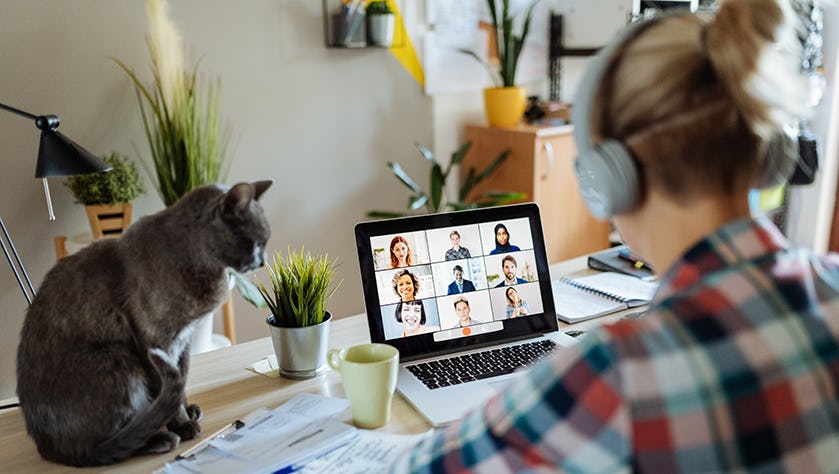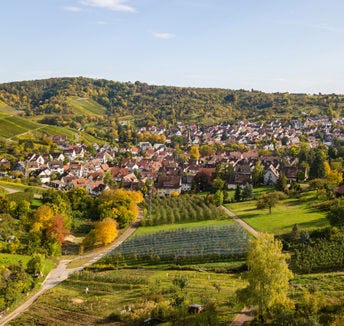
Where do you have your best ideas? For some people it’s in the shower or out running, while in a professional setting it could be during a creative workshop or when sharing a coffee.
In most businesses, there are times when creative thinking is needed to solve problems or come up with new concepts – but how do you bounce ideas around with colleagues when some people are working remotely?
As hybrid working becomes the new normal, having effective strategies for communicating as a remote team is essential. There are also advantages to using online platforms – for example, when people aren’t all sitting around a boardroom table, more introverted people might feel empowered to speak up.
Here are seven tips for hosting a ‘virtual campfire’, which is an online video meeting designed to spark new ideas.
1. Choose your digital platform
Decide which web conferencing platform you’re going to use and what screen sharing options you might want to employ as the host. Work operating system Monday.com and virtual whiteboard Miro can both be integrated with Zoom, for example, allowing for everyone to have something to focus on (having a video of a real campfire can be nice to focus on during the opening minutes).
2. Decide on your physical location
Hybrid working doesn’t just mean working from home virtually or from the office; its about having the choice to work wherever suits you best. You can get together at your company HQ, join a campfire from home, or even meet in small groups at local flexible workspaces if being in a working environment helps you feel more productive – indeed, 70% of workers said they feel more collaborative when working in an office environment according to recent IWG research. Distractions at home or challenges such as poor internet connection make a communal workspace an inviting alternative to working from home or in a café, and being in a professional environment can help put you in the frame of mind to collaborate.
3. Make it fun
You might not be able to toast marshmallows and sing songs around a real campfire, but instigating some ice-breaking activities, playing music, running some humorous polls and incorporating video is a good way to make it feel less formal than a normal Zoom meeting. Posing a couple of lateral thinking problems can also be a good way to warm people up, with answers supplied in the chat box.
4. Select the right time
Hybrid working also means some employees could be logging on from overseas, so consider time differences when planning a session – midweek is likely to be when people are feeling most focused.
Scheduling the virtual campfire for the end of the day and encouraging people to grab a drink and a snack can lighten the mood. If you have the budget, you could send people an Uber Eats voucher for take-out pizza, which everyone eats at the same time, whether they are at home, in a coworking space or an office.
5. Give everyone a chance to speak
In the same way as sitting around a real campfire, it’s good to go around in a virtual ‘circle’ to allow everyone the chance to speak (bear in mind that 30 people, for example, will be too many so keep the attendee count small if you can). Sending a few talking points in advance is a good idea so that people can be prepared and come armed with some ideas.
6. Delegate someone to write up the notes
There will be a lot of conversation going back and forth so decide who is in charge of taking notes and consolidating the ideas throughout the session – this could be done with pen and paper or on a platform such as Monday.com. Afterwards, the team can refer to the takeaways collectively.
7. Empathy and authenticity are key
A virtual campfire should be a safe space. That means reserving judgement, listening and allowing people with conflicting ideas to also share. As a leader, it’s important to model this behaviour so that your team will feel comfortable. So, open up and be prepared to be vulnerable. Offering an insight into your personal life or talking about a struggle you’ve overcome can be a great way to initiate a truly authentic conversation.
8. Set a time limit
The joy of a real campfire is that it eventually goes out, so set a virtual equivalent of the final flames and ensure everyone is aware of the time constraints in advance.
A follow-up meeting with more senior members of the team could then take place at a convenient coworking space, for example, where the decision making can happen face to face. For creative tasks, it might be particularly beneficial to troubleshoot challenges in this way, or take inspiration from a buzzy workspace that could spark new ideas.
Enjoy this? You might also like these Spaces magazine stories:
Share this article
 Read now The model village: is this what life will look like in five years’ time?
Read now The model village: is this what life will look like in five years’ time?
 Read now Which hybrid lifestyle is right for you?
Read now Which hybrid lifestyle is right for you?